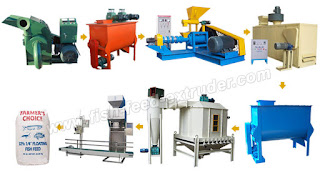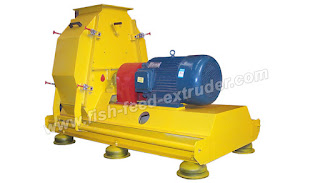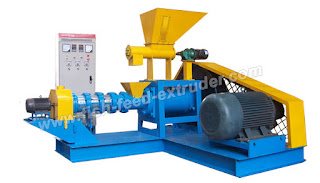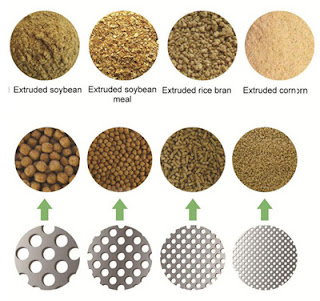graceli
New Member

STEP 1.
Use finely ground ingredients of similar particle size. Dissimilar sizes results in an unstable pellet. Individual ingredients should be ground using a hammer mill, or other type of grinder or even a mortar and pestle. A sieve can also be used to remove large particles or foreign material like stones, pieces of metal etc that can damage machinery.
STEP 2.
Weigh or measure ingredients. Take particular care when weighing micronutrients (vitamin and mineral premixes) as these are used in very small quantities and are very expensive.
STEP 3.
Mix all ingredients thoroughly. If large batches are to be prepared, the dry ingredients can be mixed in a large cake mixer or even in a cement mixer. Poor mixing will result in variation of daily nutrient intake. Good mixing can also improve palatability.

STEP 4.
Mix vitamins and minerals with small amount (e.g. 10% of total batch) first then blend into larger mixture (to help ensure the vitamins and minerals are evenly distributed within the mixture).
STEP 5.
Add the oil and then mix for at least another five minutes. To ensure oil is well mixed throughout the ingredients, it is useful to warm the oil or make an emulsion with warm water. Mix with dry ingredients slowly.
STEP 6.
Add water and mix well to form a mash with a cake-like consistency. Water should be added slowly and small test batches of the mixture extruded through the pellet machine (mincer) to see how easily the mixture passes through the die and how the pellets hold together. As a general rule, the total moisture content of the mash should be in the range of 45 to 55% to produce good pellets. If moist ingredients like trash fish, minced poultry etc are used, less moisture will be needed (e.g. 25-45%). Adjustments must also be made depending on the type of binders, if any, are used.
STEP 7.
Pass the feed mash mixture though a pellet machine (mincer) with a 1, 2, or 3 mm die depending on the size of the fish that is being fed. It is usually best to use the largest diameter pellet that fish will readily eat. Tables 5 and 6 give a guide to the size of pellets required for different size fish and prawns.

STEP 8.
There is no need to heat outside the dry type fish feed extruder machine, through the screw extruding of the raw material, heat is produced and gathered during the rotary working process in the airtight environment, and during the high temperature ripening process, the starch and fiber of the raw material become swell. Then under the pressure-tight condition, material will be formed into pellets by shaping mould. At the end, through the high pressure produced by the regular rotating of the screw, after being cut by the forepart cutter which rotates regularly and high-speedily, the finished products will be shrunk and become small average puffed balls in room temperature and pressure.
STEP 9.
The moist pellets should be dried to a moisture content of 10% or less. Ideally, this should be at low temperature (less than 60 ºC) and with good airflow to dry the pellets as quickly as possible to ensure that heat-sensitive micronutrients such as vitamins are not destroyed. This can be achieved using: a fan-forced oven (e.g. set at 60 ºC) for several hours, a simple drying cabinet (with hot air supplied by a heater blower), a solar dryer or simply by spreading the pellets in the sun. It is most important when drying pellets to prevent fungal contamination and to avoid an excessive loss of critical nutrients. Fungus can be toxic to fish and to the humans who handle the feed.
Step 10.
When pellets are dry and cool they should be stored in bags or containers that can be sealed against insects, rats or other pests and to keep out moisture. Avoid using plastic bags because feeds can sweat and this encourages growth of mould.
Equipment needed:Weighing scale or balance,Mixer,Grinder (e.g. fish feed hammer mill or floating dry type fish feed extruder can produce pellets from 0.9-15mm),Sieve,Fish feed extruder machine (mincer) with various size die plates (e.g. 1,2,3,5 m diameter),Steamer,Saucepan for cooking starch or starch rich ingredients,Drier,Moisture-proof container for pellets.

Want a quote, please send email to : azeusfishfeedextruder@gmail.com
